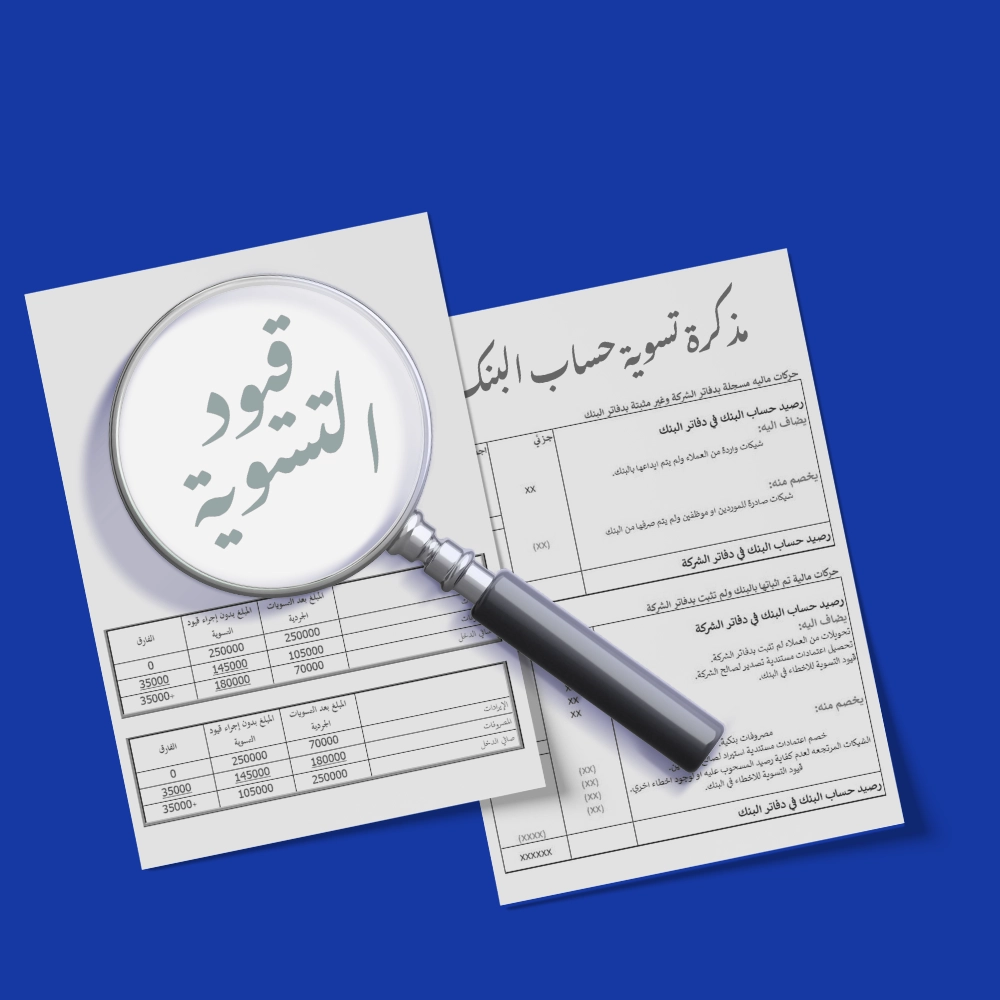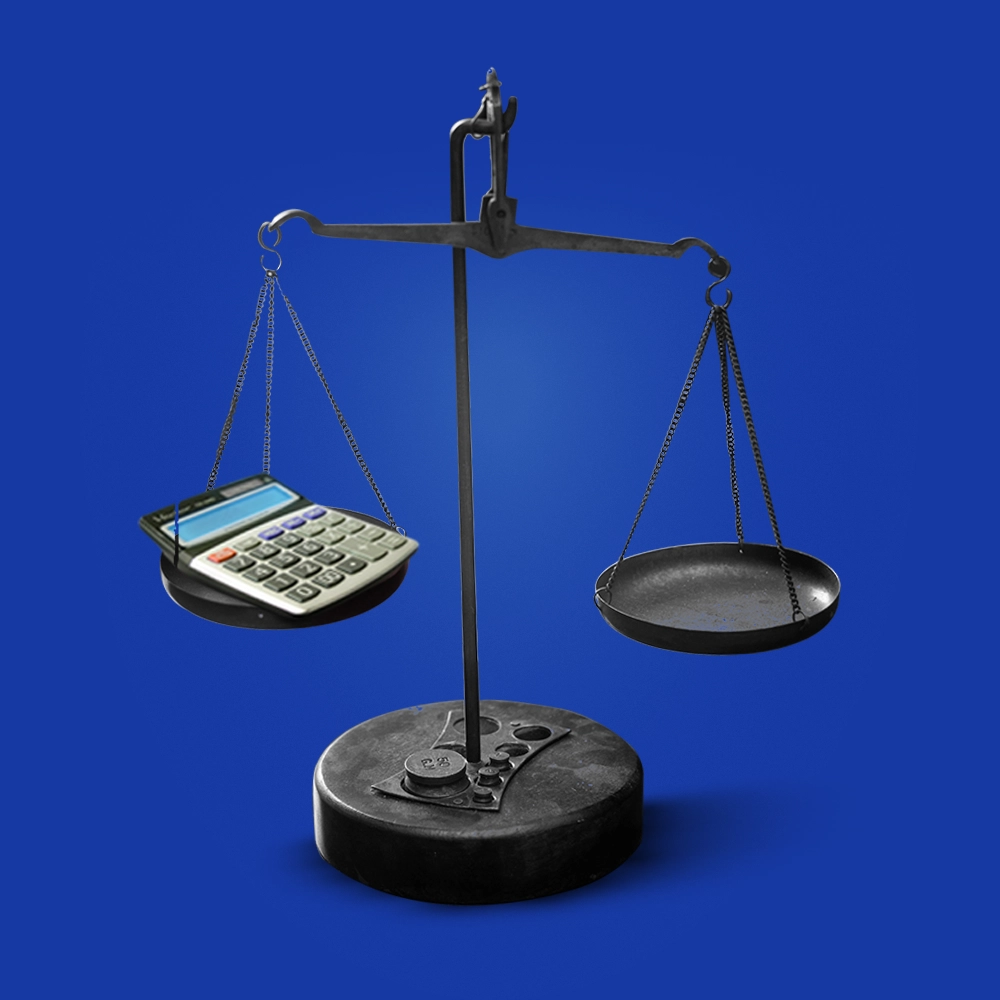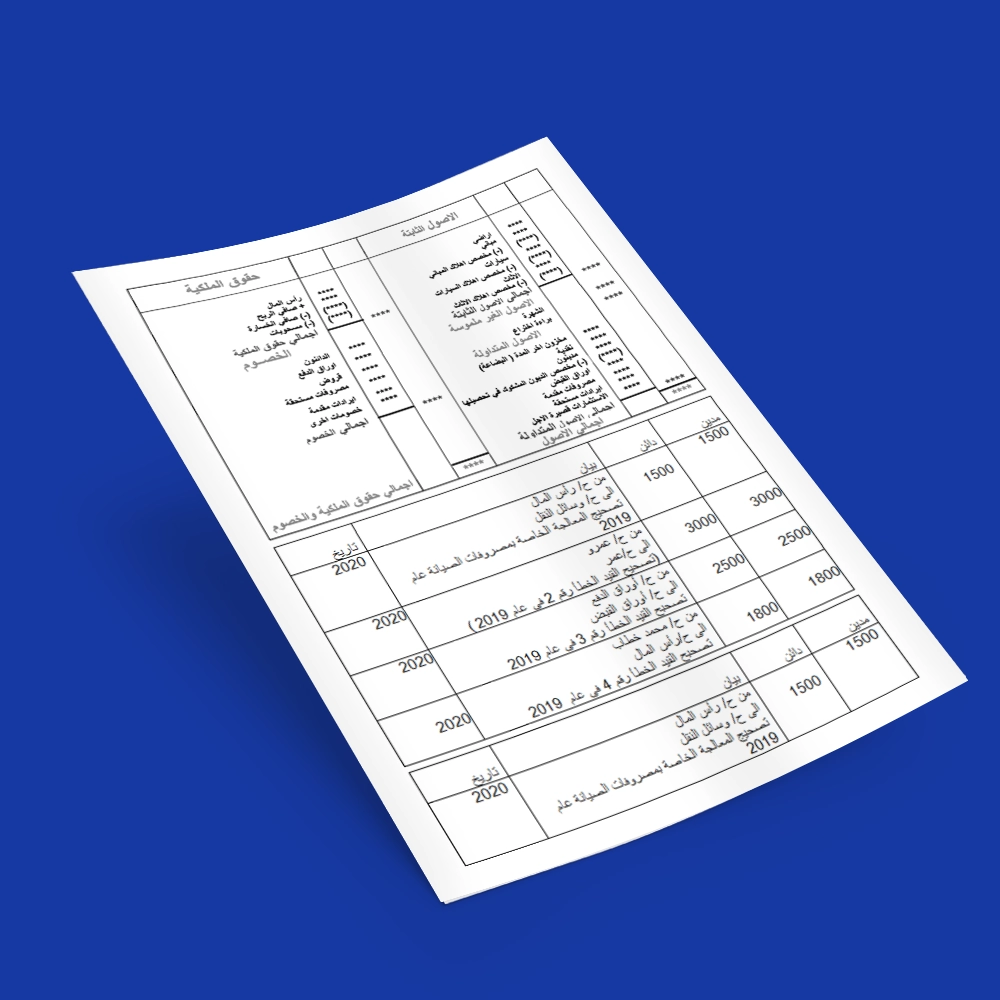What are Adjusting Entries and Their Calculations with Practical Exercises

Table of contents:
- Definition of Adjusting Entries
- Fundamentals and Principles of Adjusting Entries
- Importance of Adjusting Entries
- Adjusting Entries Calculations
- How to Calculate Adjusting Entries
- Difference Between Adjusting Entries and Closing Entries
- Practical Exercises and Examples of Adjusting Entries
- Do Adjusting Entries Affect Only Income Statement Accounts or Only Balance Sheet Accounts?
- When Can Adjusting Entries Be Prepared?
- How Does Daftra Software Help in Preparing Adjusting Entries Automatically?
- Frequently Asked Questions
All accounting departments in institutions and companies evaluate and inventory all their financial and commercial activities and transactions through various procedures over specific time periods.
The financial cycle that accounting operations go through includes several stages, starting with accounting entries in the journal book, then posting to the general ledger, then the trial balance, and then preparing final accounts and financial statements.
These steps aim to show the company's financial position, know the correct value of company assets, and determine profit and loss ratios. This is one of the tasks of financial accounting, which focuses on documenting and inventorying all financial and commercial transactions and operations carried out by the company, according to data from financial reports and accounts.
For example, there are procedures that involve inventorying all expenses and revenues belonging to the company, using either the accrual basis or the cash basis, to compare expenses and revenues for the same time period, which is referred to as adjusting entries.
We often hear about the term settlement restrictions, but without understanding what it is, so in this article, we will try to reveal everything related to it.
Definition of Adjusting Entries
Adjusting entries are entries that correct the balances of assets and liabilities and their corresponding revenue and expense accounts. They verify many accounts, such as estimated and paid accounts, as well as accrued accounts, in both the income statement and balance sheet.
Adjusting entries are prepared at the end of the financial period, after preparing the trial balance and before preparing financial statements.
It can be said that adjusting entries are journal entries made by the company at the end of the fiscal year to determine the results of the company's operations and activities and show its financial position.
These entries aim to adjust the balances of some accounts, ensure the true value of company accounts and assets, and inventory expenses and revenues for a specific time period, and match them with each other according to accounting principles.
Fundamentals and Principles of Adjusting Entries
The fundamentals and principles on which adjusting entries are based include the accrual basis principle, the cash basis, and accounting assumptions:
- Cash Basis: All operations of the fiscal year (expenses, revenues, profits) are recorded when they occur, i.e., only when paid or collected.
- Accrual Basis: Each financial period is charged with all revenues belonging to it, whether collected or not, alongside any expenses and costs belonging to the same financial period, whether paid or not.
- Accounting Assumptions: Independent accounting entity assumption, accounting period assumption, going concern assumption, and measurement assumption.
Other principles, such as historical cost, revenue generation, recognition of profits and expenses, etc., are among the principles that you can learn about through our comprehensive article on accounting principles, accompanied by exercises on accounting settlement restrictions and solved practical examples.
Importance of Adjusting Entries
Adjusting entries are fundamental to accounting principles, as financial statements and final accounts cannot be prepared without them:
- Determining the basic value of company assets in terms of quantity and value, and evaluating the company's financial position
- Charging the financial period with its share of costs and profits
- Knowing the actual balances of assets and liabilities
- Determining the actual profit and loss ratio and value for the company by knowing the correct value of gross profit and expenses
- Reducing errors in financial records and income records by ensuring the accuracy of accounts and figures in the trial balance
- Recording revenues or expenses not recognized during a specific accounting period
- Achieving the matching principle by entering accounting and financial operations and transactions in the journal book, then recording them in the general ledger
- Making adjustments to income statement and balance sheet accounts, such as insurance and interest expenses, deferred revenues, paid expenses, and accumulated expenses
- Adjusting the apparent balances in the trial balance by performing accounting treatment of financial differences between book values, which are the value of assets according to the balance of its accounts on the balance sheet, and the real values of some accounts.
- Ensuring all company operations are included in the company's financial statements
- Identifying unpaid income alongside required expenses that have not yet been paid
- The importance of adjusting entries also stems from the existence of some financial operations that are not recorded daily, such as wage and salary entries, and some expenses that are not recorded in the accounting period, such as insurance or rent expenses, because they are realized over time.
Read also: What is external review, and what are its most important criteria?
Adjusting Entries Calculations
Adjustments are one of the most important components of the accrual basis, where adjusting entries aim to achieve the accrual and matching principles by matching profits with costs during a specific time period.
Therefore, it is recommended to prepare and apply adjusting entries accurately, as rushing their preparation and not knowing the true value of company accounts and assets negatively affects the company's financial position and activities in general.
The following are the most important adjusting entry accounts:
There are several types of adjusting entries: expense adjustments, revenue adjustments, and estimates.
Expense Adjustments
This means inventorying and reviewing expenses, costs, and all documents and balances related to company expenses incurred during a specific time period to achieve revenues and profits during the same time period. Expense adjustments include the following:
Accrued Expenses
These are expenses for goods or services that have been utilized, but those expenses have not yet been paid.
These expenses are considered liabilities because they are realized in a period preceding profit collection.
Applying the matching principle (matching expenses with revenues), these expenses must be recorded or paid during the current financial period.
Examples of accrued expenses:
- Employee salaries have not yet been paid
- Rent that must be paid
- Taxes that must be paid
- Electricity and gas service bills, etc.
Prepaid Expenses
These are expenses that the company paid to obtain goods or services during a new financial period, but the benefit from these services has not been realized in the current period.
Prepaid expenses are also considered a type of asset because the benefit is not realized during the payment period.
This means the company pays in the current period, then benefits from the service or good later.
They are recorded in the assets section of the balance sheet, and in this case, this type of expense must be excluded during the adjustment process according to the accrual principle and matching revenues with expenses.
Examples of prepaid expenses:
- Salaries paid in advance
- Prepaid rent, 6 months' advance rent
- Prepaid insurance expense or insurance premiums
- Advertising and marketing costs
- Transportation and distribution expenses
- Bills paid in advance
Depreciation Expenses
These include the company's fixed assets used to generate profits or manage company activities and operations, such as property, equipment, and others.
When the useful life of these assets ends, they may be sold or leased.
Asset productivity decreases over time, so each accounting period must be charged with part of the asset's cost.
According to the matching principle, fixed assets are converted to expenses upon adjustment, where fixed asset depreciation expense represents the gradual use of assets.
Examples of depreciation expenses:
- Calculating depreciation on a production machine in your factory
- Or on vehicles designated for goods transportation
Revenue Adjustments
This means inventorying all revenue transactions, documents, and balances, and making the income account a credit by recording all revenues regardless of whether they are collected during a specific time period. Revenue adjustments include the following:
Accrued Revenues
These are profits and revenues resulting from a good or service provided by the company that have not yet been collected.
They belong to the current financial period, so they will not appear in the trial balance, and no initial entry is made for them.
These revenues are considered assets because the company provided a service or good, and its profits will be collected later.
It can be said that accrued revenues are recorded in contracts extending over more than one accounting period, so the company cannot print any invoices until work is completely finished.
Thus, these revenues are not recorded and do not appear in the trial balance, but must be recognized.
Examples of accrued revenues:
- Loans
- Long-term projects
- Securities and currency revenues
Unearned Revenues
These are revenues and profits collected in advance before providing a service or good, appearing in the trial balance as received revenue.
Unearned revenues are considered liabilities because they are collected before realizing the benefit.
This means collecting an advance amount from the customer in one accounting period, then providing the service in a subsequent accounting period.
Examples of unearned revenues:
- Warehouse rental revenues
- Advance payment for subscription to a specific service
- Revenues from selling airline or concert tickets
Estimates
These are items and accounts that depend on personal estimation, experience factor, or economic and financial circumstances for their calculation and adjustment.
These items are future estimates that may or may not occur, so they cannot be calculated accurately.
Examples of estimates:
- Doubtful debts
How to Calculate Adjusting Entries
Adjusting entries are prepared using journal entries, and companies rely on specialized accounting software for adjusting entries. The following are the main steps for making adjusting entries:
- Recording and keeping all invoices and documents for all financial and commercial operations and transactions conducted by the company
- Determining the debit side (identified by "Dr.") and credit side (identified by "Cr."), where credit and debit accounts must be identified
- Identifying accounts requiring adjustments, then determining affected accounts, whether in the income statement or balance sheet
- Determining and analyzing all amounts related to adjusting entry accounts
- Numerically determining what will appear in the income statement as revenue or expense
- Numerically determining what will appear in the financial position statement as an asset or determining the discount percentage from paid or accrued amounts
- When preparing adjustments, comparing amounts with what is recorded, and ensuring these amounts are entered in the trial balance
- Recording and adjusting accounts in the journal book, then posting to the general ledger
- Closing all balances of temporary accounts, closing debit accounts by making them credit, and credit accounts by making them debit
Difference Between Adjusting Entries and Closing Entries
Adjusting entries involve placing restrictions on accounts, including prepaid and accrued expenses, alongside accrued and unearned revenues.
This is done before preparing financial statements and reports to evaluate the company's account status and know its financial position.
Closing entries are income statement accounts, including revenues, expenses, and costs, and the income summary.
The process of closing items and accounts is done opposite to their nature by making debit accounts credit and vice versa.
Practical Exercises and Examples of Adjusting Entries
To illustrate how to record adjusting entries, here are some examples of adjusting entries for accrued and prepaid expenses and revenues.
Example of Adjusting Entry for Accrued Expenses:
A food products company has accrued expenses totaling $60,000, which are from the previous fiscal year. These expenses were paid in the following year.
The accounting entry adjustment would be as follows:
- $60,000 Dr. Expense Account
- $60,000 Cr. Accrued Expense Account
- $60,000 Dr. Accrued Expense Account
- $60,000 Cr. Cash Account
Example of Prepaid Expenses:
An institution paid advance rent for a warehouse for a full year, valued at $240,000, where the monthly rent was $20,000.
The entry to record the rent payment would be as follows:
- $240,000 Dr. Prepaid Expenses Account
- $240,000 Cr. Cash Account
- $20,000 Dr. Expense Account
- $20,000 Cr. Prepaid Expenses Account
Example of Accrued Revenues:
A textile company has accrued revenues belonging to the previous fiscal year, valued at $100,000, which were collected in the current year.
The accrued revenue adjustment entry is as follows:
- $100,000 Dr. Accrued Revenue Account
- $100,000 Cr. Revenue Account
- $100,000 Dr. Cash Account
- $100,000 Cr. Accrued Revenue Account
Example of Unearned Revenue Adjustment:
A company received revenues valued at $25,000 on 12-31-2021, but the value of this year's revenues is $5,000.
Therefore, unearned revenues can be adjusted as follows:
- $25,000 Dr. Cash Account
- $25,000 Cr. Unearned Revenue Account
- $5,000 Dr. Unearned Revenue Account
- $5,000 Cr. Revenue Account
Do Adjusting Entries Affect Only Income Statement Accounts or Only Balance Sheet Accounts?
Adjusting entries are prepared to record all the company's financial and commercial transactions at the end of the accounting period.
The adjusting entry process includes a comprehensive examination of all accounts included in the trial balance at the end of the fiscal year, and it significantly affects both the balance sheet and income statement.
An account from the balance sheet and an account from the income statement are identified, and adjusting entries are placed in them with adjustments made to both.
Read also: Definition of the term total income
When Can Adjusting Entries Be Prepared?
Adjusting entries are generally prepared at the end of the financial period, or they are made before preparing financial statements, or when there is a need to update and modify accounts and their balances, to evaluate the company's financial position according to accounting principles.
How Does Daftra Software Help in Preparing Adjusting Entries Automatically?
After completing purchase and sale operations and finishing accounting recording, and in order to analyze data to reach reports, we need adjusting entries. Daftra helps you perform adjustment calculations and direct them, resulting in disciplined and refined financial reports and statements without exhausting yourself. Register with Daftra and start a free trial period that will give you more experience and reassure you in choosing the appropriate accounting software.
Frequently Asked Questions
When are adjusting entries made?
Adjusting entries are made at the end of the accounting period before preparing financial accounting reports to ensure data accuracy.
What are bank reconciliation entries?
Bank reconciliation entries are used at the end of the accounting period to adjust account balances to ensure the accuracy of financial data by treating non-matching balances.
What is the difference between journal entries and adjusting entries?
Adjusting entries are modifications and treatments of non-matching balances in records to ensure data accuracy before preparing financial statements, while journal entries are recordings of each financial transaction as it occurs.
Do adjusting entries only affect balance sheet accounts?
Adjusting entries not only affect balance sheet accounts but also affect income statement accounts.
Conclusion Adjusting entries are entries prepared at the end of the company's accounting period, before preparing financial statements.
Adjusting entries aim to evaluate the true values of the company's assets and properties, determine profits and expenses, and match them with each other according to the accrual basis. They affect both balance sheet accounts and income statement accounts.















